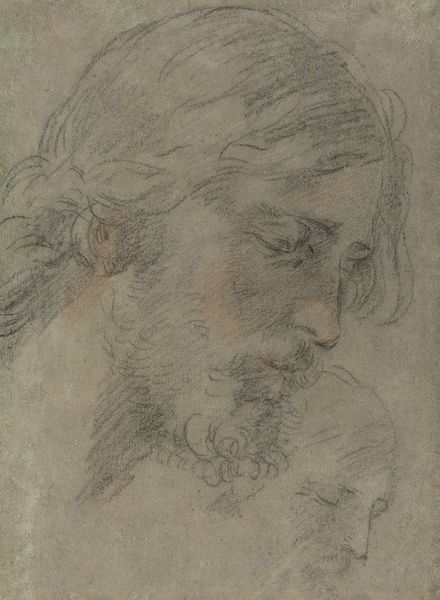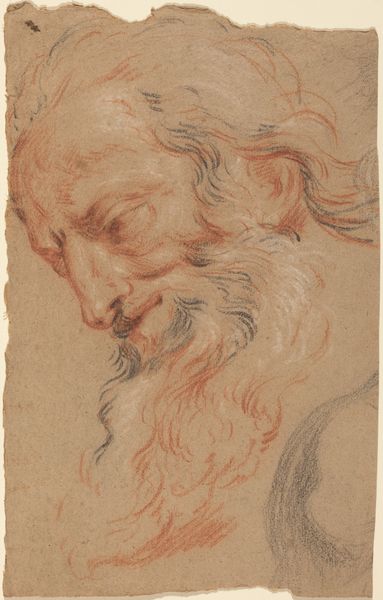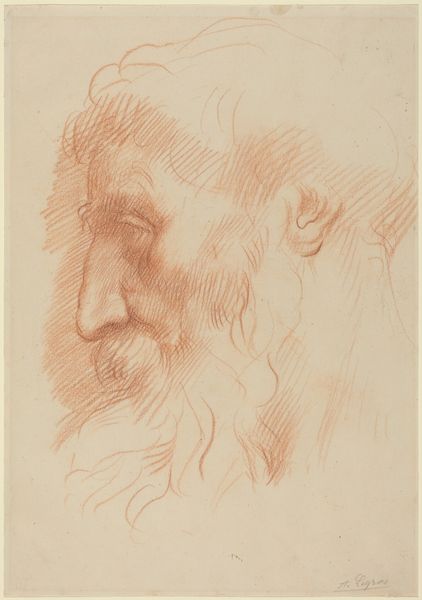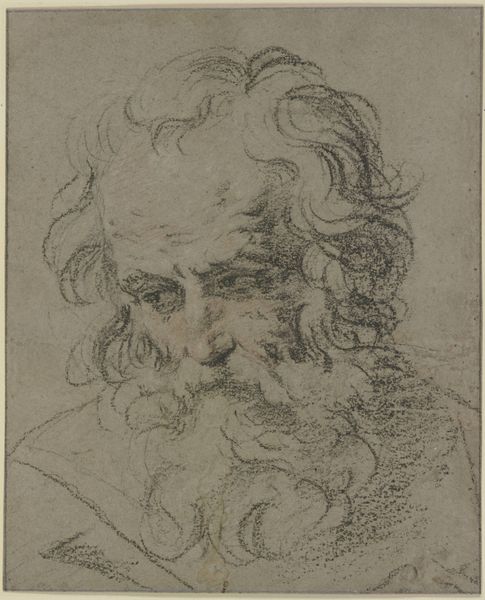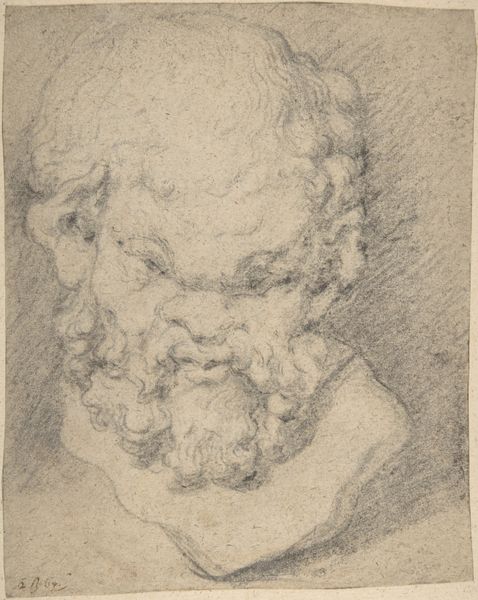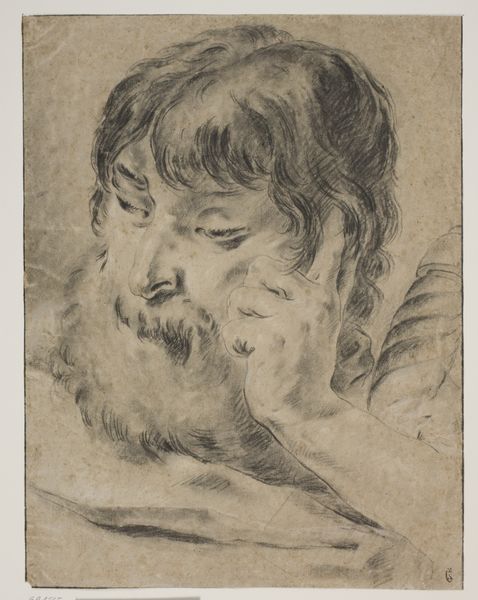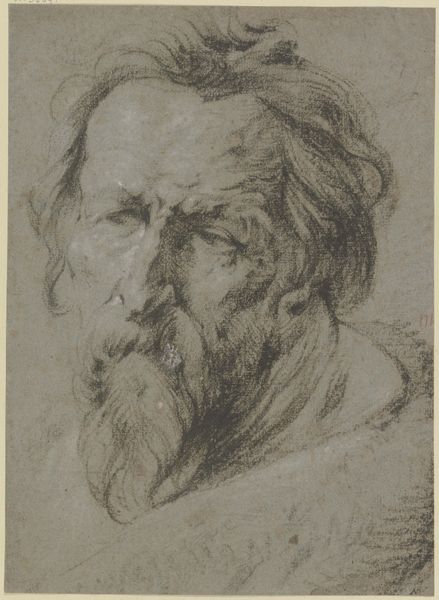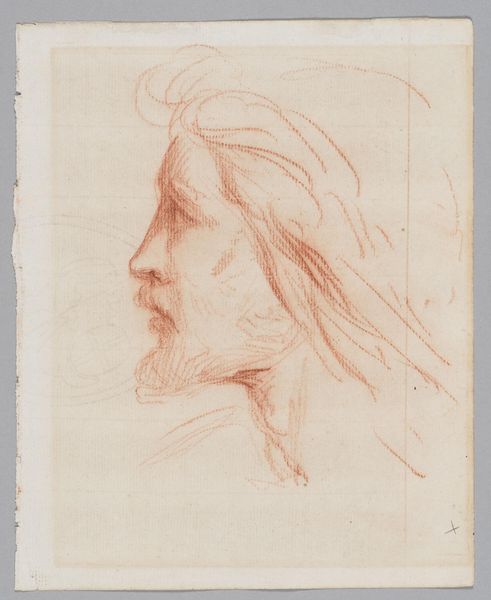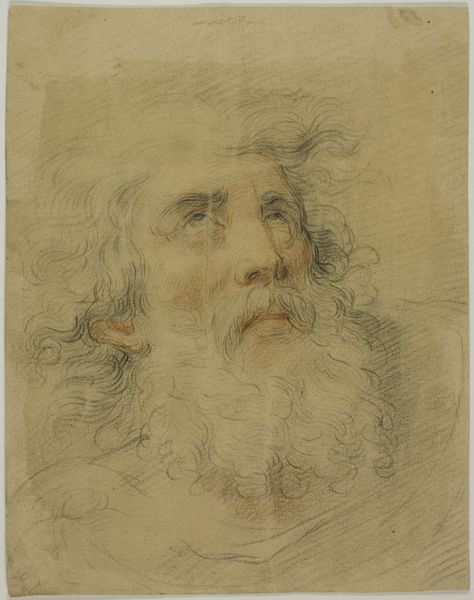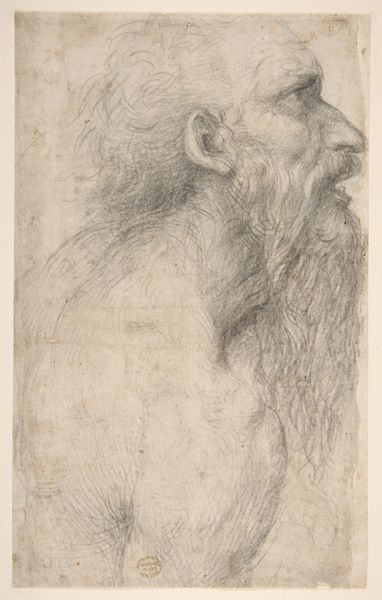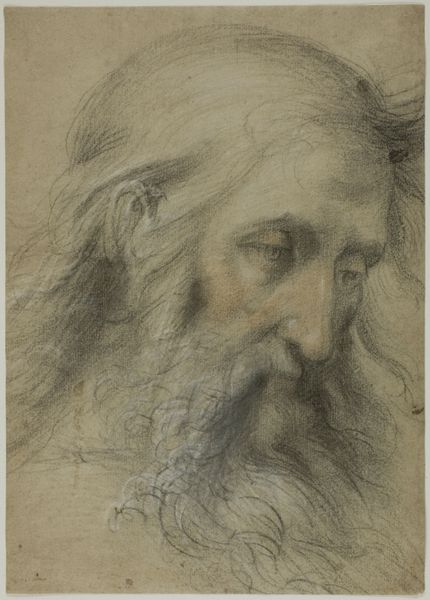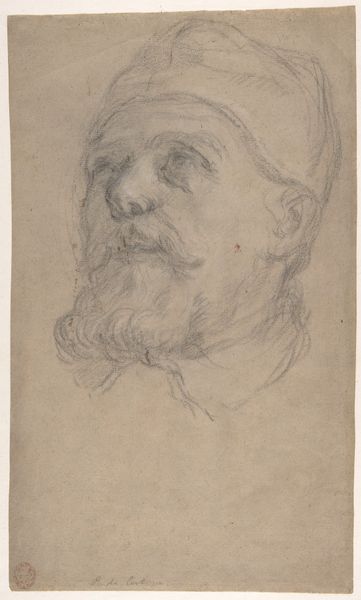
drawing, pencil
#
portrait
#
drawing
#
baroque
#
pencil drawing
#
pencil
#
academic-art
#
realism
Dimensions: overall: 37.9 x 28 cm (14 15/16 x 11 in.)
Copyright: National Gallery of Art: CC0 1.0
Curator: This is Guido Reni's "Head of Christ," a pencil drawing dating from around 1623. Editor: It’s arresting. Immediately, I'm struck by the quiet melancholy. The downcast gaze and the soft shading... it feels deeply personal, almost like a private moment captured. Curator: Reni was a leading figure of the Bolognese School, influential in shaping Baroque classicism. It’s worth thinking about where such a depiction comes from historically and its cultural legacy in shaping ideals. The idealization of the subject invites consideration about constructions of masculinity and power within the Church and the implications of representing a divine figure in such a delicate way. Editor: Agreed, but what resonates most for me is the materiality of the work itself. Notice the layered pencil strokes and how Reni achieves such depth and texture. The labor and process in achieving this piece makes the sacred accessible, it is an interesting rendering. I am compelled to also analyze what type of pencil and the cost of such high end materials at the time. Curator: And how does the availability and distribution of these artistic resources reflect on the socio-economic dynamics of 17th-century Italy? These kinds of images become widely reproduced and circulated, how does the accessibility change or reinforce hierarchical power structures? Editor: Exactly, and how are these images viewed amongst the lower class and higher class individuals. Looking closely at the pencil work, I can almost feel the artist's hand moving across the page, and how are we meant to accept or question it? I do ponder on who the intended viewer was, since paper was still not heavily circulated in Italy at this time. Curator: These pieces often acted as tools of both power and piety, reinforcing social doctrines and also providing solace, an interesting point that one can question to this very day. Editor: Absolutely. By investigating the creation and circulation, we confront issues of class, labor, and access – essential to a more grounded, comprehensive art historical perspective, don't you think? Curator: I couldn't agree more. It is often important to reflect how different audiences view this piece and its material, for an understanding of culture, gender and even accessibility for these works of art to be studied and honored. Editor: Absolutely. That adds a needed perspective and an intersectional and inclusive view.
Comments
No comments
Be the first to comment and join the conversation on the ultimate creative platform.
